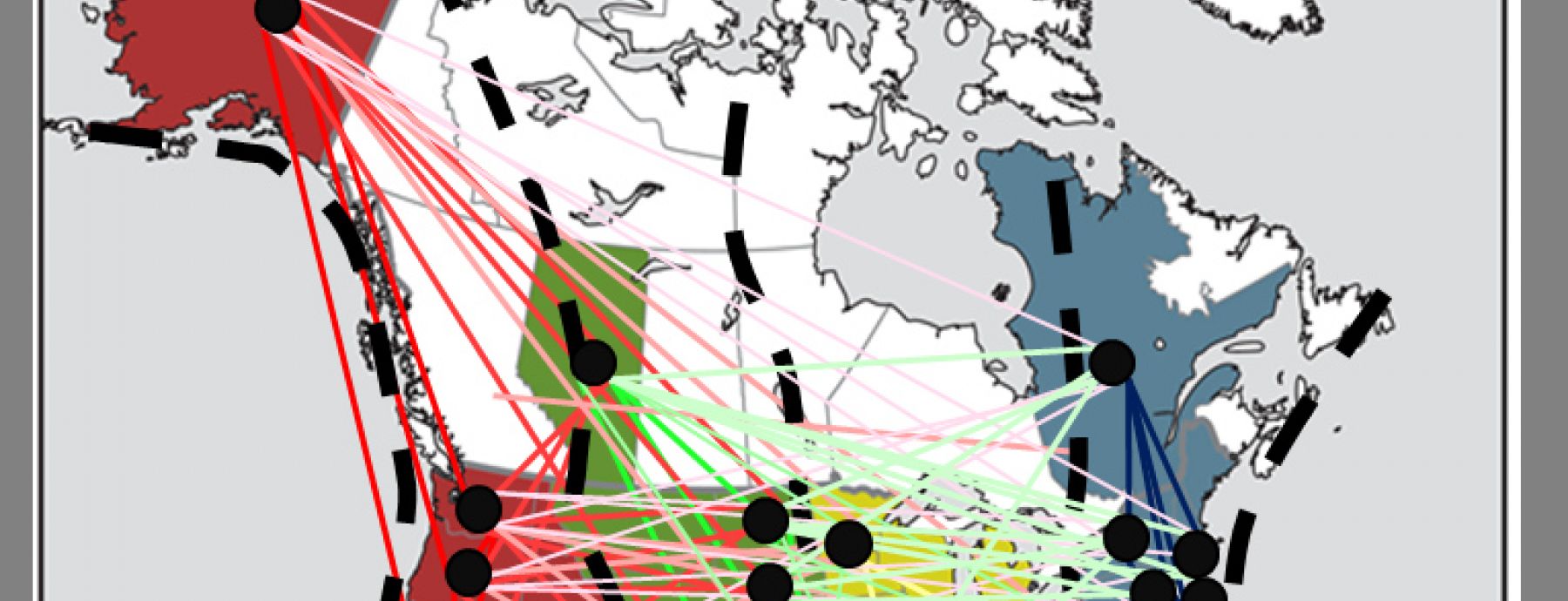Avian influenza virus (AIV) can adapt to infect and kill domesticated birds and humans. Usually, however, low-pathogenicity strains of virus circulate among waterfowl such as ducks, geese, and gulls- birds that can migrate long distances along routes called flyways. The importance of the birds’ mass seasonal movements in the spread of AIV between the Eastern and Western hemispheres is well known, but the potential role of migration in determining the patterns of virus spread at an intra-continental scale has received less attention. Using complete genome sequences collected from wild birds across the US and Canada, postdoctoral researcher ‘Tommy’ Tsan-Yuk Lam and CIDD Professor Eddie Holmes applied statistical phylogeographic techniques to investigate the strength, patterns and determinants of AIV gene flow in North America.
Informed by an extensive viral data set, their analysis indicates that the spread of AIV tended to follow 4 major avian flyways that exist in North America, with the mixing of viral genes within these sky-highways being more common than between them. In addition, a number of gene flow indices supported a genetic isolation-by-distance, in which viruses move more often to adjacent rather than distant geographic locations. Along with the observation that the Prairie Pothole region that straddles the US/Canadian border appears to serve as a hub for viral gene flow, this information about AIV dispersal could allow for better prediction about where and how a newly invading virus might spread.
Written By: Lam TT, Ip HS, Ghedin E, Wentworth DE, Halpin RA, Stockwell TB, Spiro DJ, Dusek RJ, Bortner JB, Hoskins J, Bales BD, Yparraguirre DR, & Holmes EC
Paper Url: http://onlinelibrary.wiley.com/doi/10.1111/j.1461-0248.2011.01703.x/abstract
Paper Id: 10.1111/j.1461-0248.2011.01703.x
